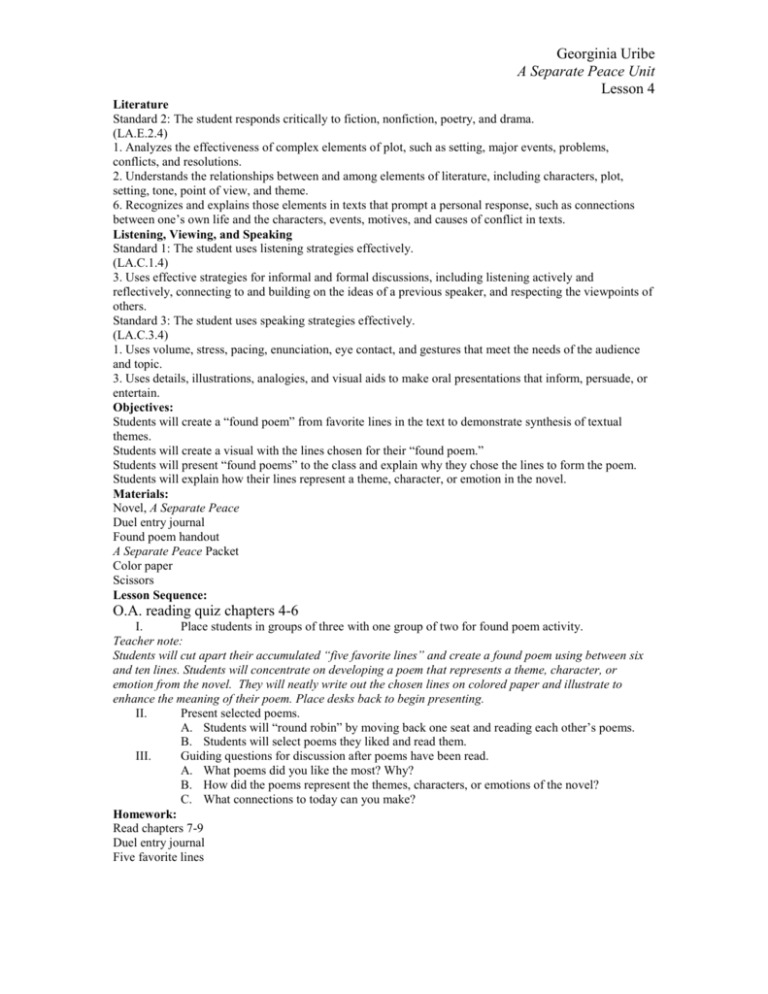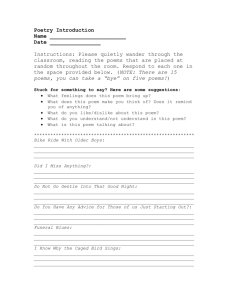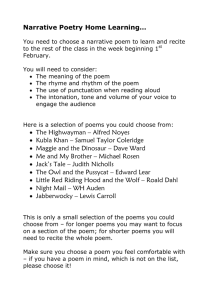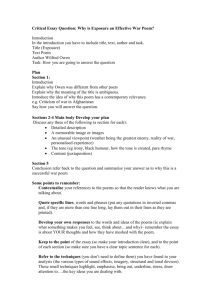Literature - EnglishTeachers
advertisement

Georginia Uribe A Separate Peace Unit Lesson 4 Literature Standard 2: The student responds critically to fiction, nonfiction, poetry, and drama. (LA.E.2.4) 1. Analyzes the effectiveness of complex elements of plot, such as setting, major events, problems, conflicts, and resolutions. 2. Understands the relationships between and among elements of literature, including characters, plot, setting, tone, point of view, and theme. 6. Recognizes and explains those elements in texts that prompt a personal response, such as connections between one’s own life and the characters, events, motives, and causes of conflict in texts. Listening, Viewing, and Speaking Standard 1: The student uses listening strategies effectively. (LA.C.1.4) 3. Uses effective strategies for informal and formal discussions, including listening actively and reflectively, connecting to and building on the ideas of a previous speaker, and respecting the viewpoints of others. Standard 3: The student uses speaking strategies effectively. (LA.C.3.4) 1. Uses volume, stress, pacing, enunciation, eye contact, and gestures that meet the needs of the audience and topic. 3. Uses details, illustrations, analogies, and visual aids to make oral presentations that inform, persuade, or entertain. Objectives: Students will create a “found poem” from favorite lines in the text to demonstrate synthesis of textual themes. Students will create a visual with the lines chosen for their “found poem.” Students will present “found poems” to the class and explain why they chose the lines to form the poem. Students will explain how their lines represent a theme, character, or emotion in the novel. Materials: Novel, A Separate Peace Duel entry journal Found poem handout A Separate Peace Packet Color paper Scissors Lesson Sequence: O.A. reading quiz chapters 4-6 I. Place students in groups of three with one group of two for found poem activity. Teacher note: Students will cut apart their accumulated “five favorite lines” and create a found poem using between six and ten lines. Students will concentrate on developing a poem that represents a theme, character, or emotion from the novel. They will neatly write out the chosen lines on colored paper and illustrate to enhance the meaning of their poem. Place desks back to begin presenting. II. Present selected poems. A. Students will “round robin” by moving back one seat and reading each other’s poems. B. Students will select poems they liked and read them. III. Guiding questions for discussion after poems have been read. A. What poems did you like the most? Why? B. How did the poems represent the themes, characters, or emotions of the novel? C. What connections to today can you make? Homework: Read chapters 7-9 Duel entry journal Five favorite lines









